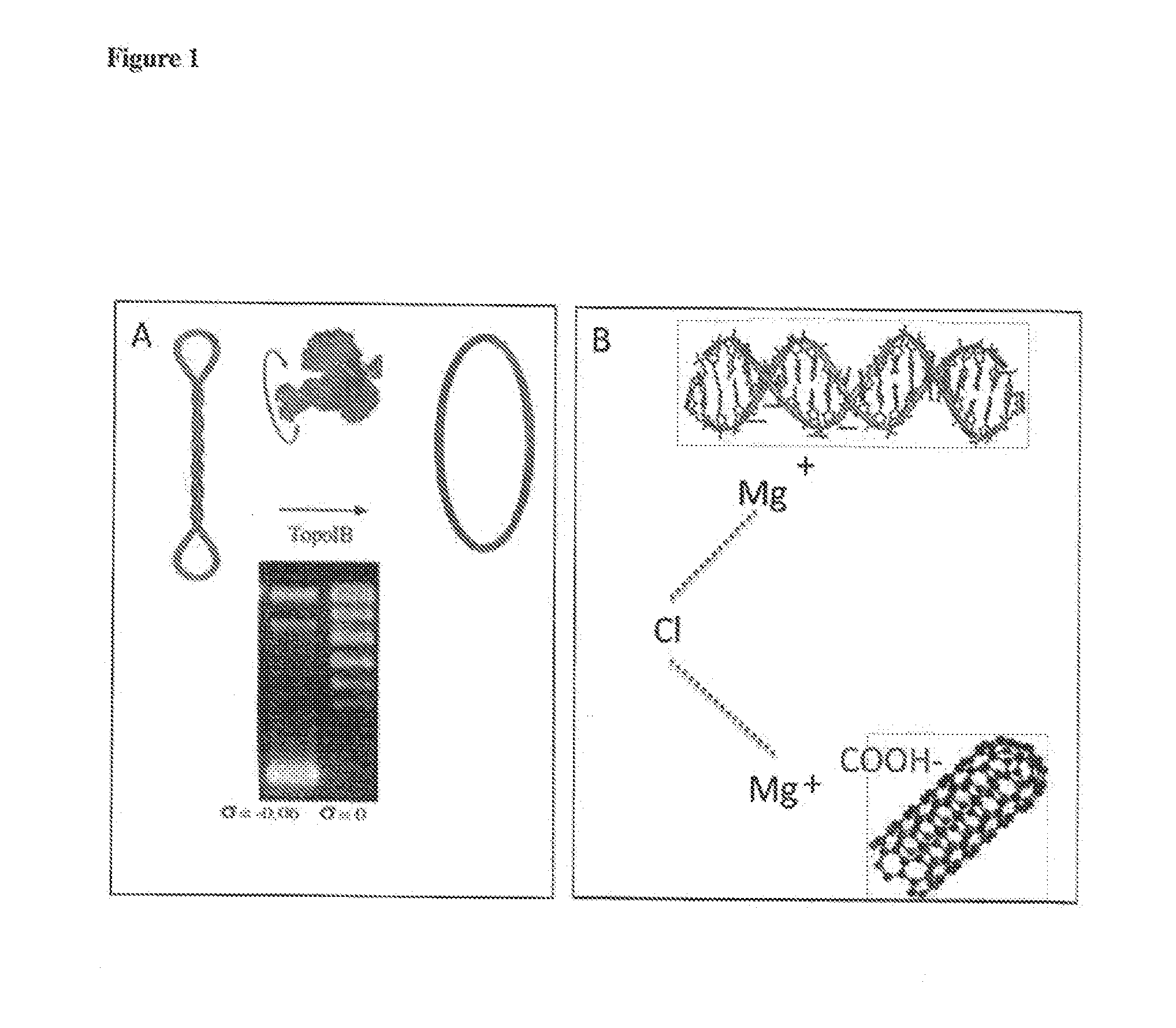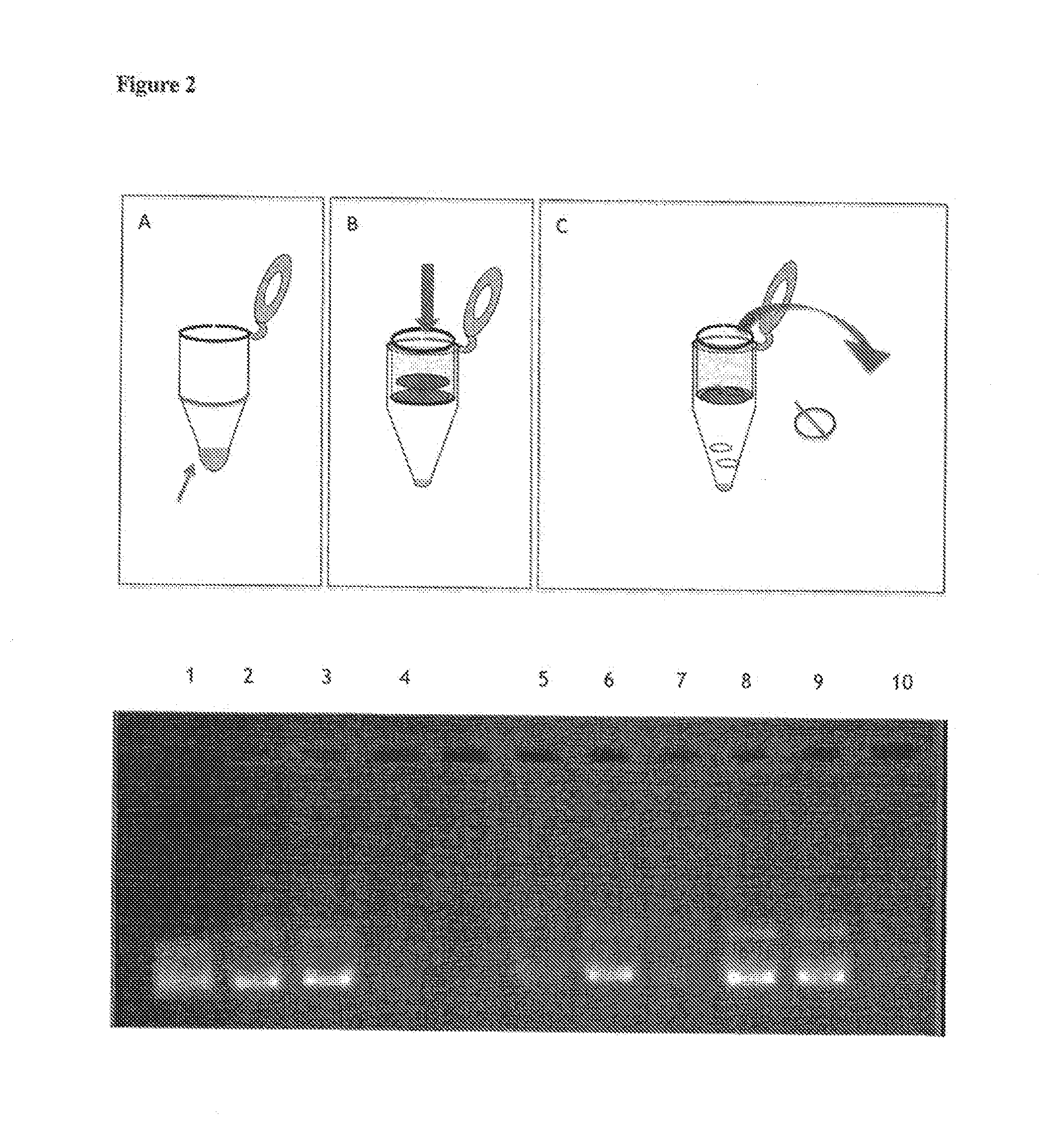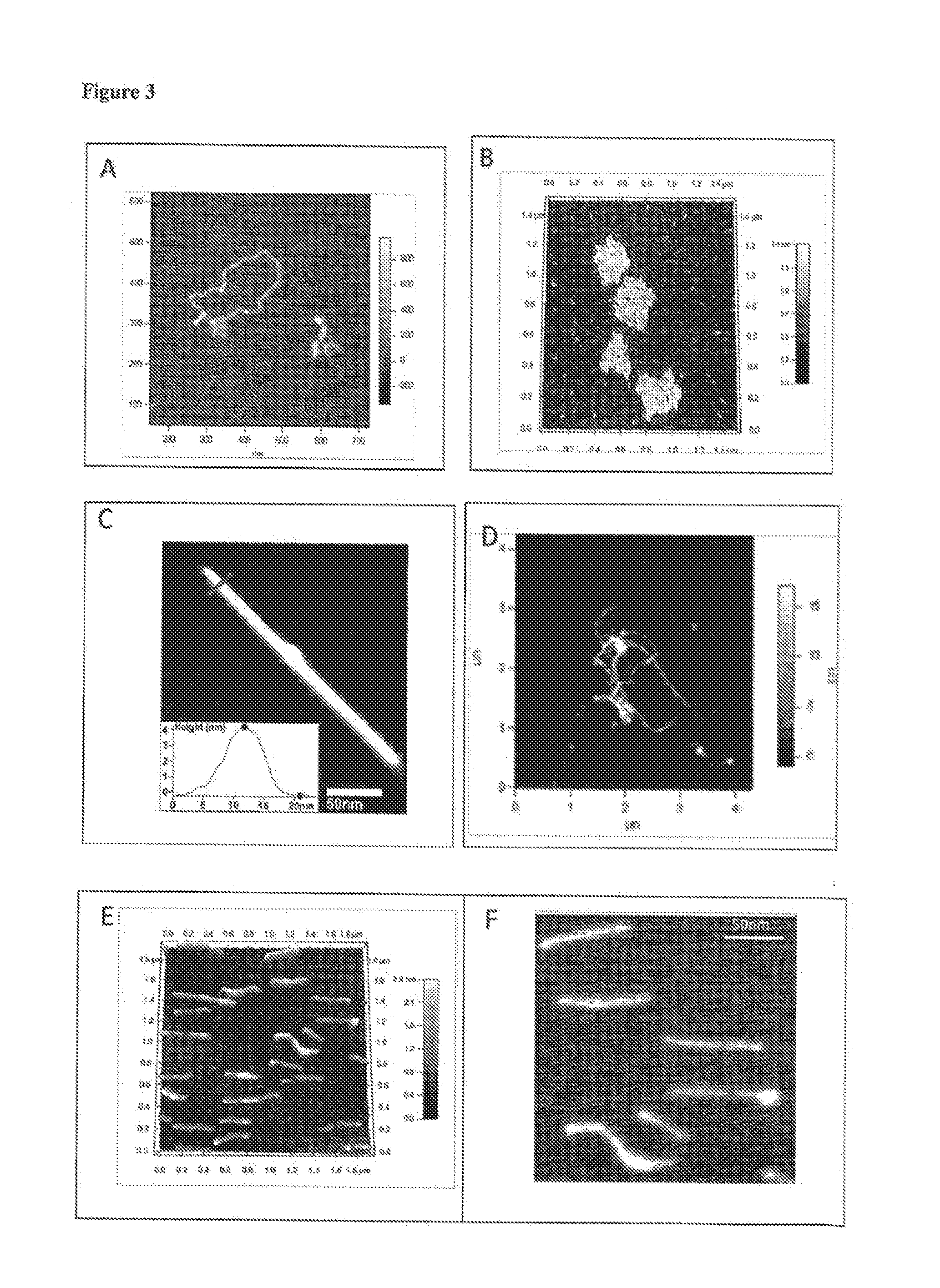Nanostructure coated with a twist-strained double-stranded circular deoxyribonucleic|acid (DNA), method for making and use
- Summary
- Abstract
- Description
- Claims
- Application Information
AI Technical Summary
Benefits of technology
Problems solved by technology
Method used
Image
Examples
example 1
Preparation of DNA and SWCNTs
Preparation of Relaxed DNA
[0098]Commercially available relaxed pBR322 DNA (TG2037-1 TopoGen) was used. Alternatively, a native negatively supercoiled DNA was incubated with DNA Topoisomerase I from Vaccinia Virus (epicenterVT710500) to form relaxed DNA. Incubation buffer: Tris-HCl pH8 10 mM, 50 mM NaCl, 1 mM DTT, 5 mM MgCl2 (Trigueros et al, Journal of Molecular Biology, vol. 335, pp 723-731 (2003). Sample incubation was for 30 minutes at room temperature. The reaction was stopped by adding 5 mM EDTA, 0.1% SDS and 0.1 mg / ml Proteinase K. The relaxed DNA was ethanol precipitated and resuspended in the desired volume of Milli-Q H2O. DNA was present at 1 mg / ml with sizes in the range 3 kb-5 kb (see FIG. 1).
Preparation of SWCNT
[0099]4 mg of SWCNTs (Sigma-Aldrich) were added to a 4 ml mixture of concentrated sulphuric acid (99.999%) and nitric acid (70%) (3:1, H2SO4:HNO3). The SWCNT acid solution was then sonicated in a bath sonicator at 60 degrees centigrade...
example 2
Coating of SWCNTs with Twist-Strained Double-Stranded Circular DNA
[0102]SWCNTs produced in accordance with Example 1 at 70 microgram / ml were pre-incubated at 100 mM MgCl2 for 10 minutes at room temperatures.
[0103]0.5 ul of 1 microgram / ml relaxed double-stranded circular DNA produced in accordance with Example 1 was then incubated together with 50 ul of the SWCNTs in a final reaction volume of 100 microlitres. Incubations were carried out in 15 mM NaCl, 70 mM MgCl2, pH 7.5 at 4 degrees centigrade (on ice) for a minimum of 3 hours to overnight.
[0104]The above incubation conditions resulted in a yield of 60-70% of coated carbon nanotubes.
example 3
Separation of Coated Carbon Nanotubes
[0105]Uncoated SWCNTs were removed from a sample incubated in accordance with Example 2 by centrifugation at 5000 rpm for 3 min in a Biofuge pico Heraeus centrifuge. The supernatant comprised soluble SWCNT coated with DNA and free DNA. The uncoated SWCNTs formed a dark pellet.
[0106]Free DNA was removed from solution by selective purification of coated SWCNTs using a modified filter binding protocol (Osheroff, DNA Topoisomerase Protocols, Vol. 95, Humana Press (1999). The filter used was a 10401191 BA85 0.45 μm Protran-Nitrocellulose (NC) blotting membrane. This nitrocellulose membrane has a binding capacity of 80 to 150 μg / cm2. Small or free DNA molecules are not retained on the filter. Consequently, passing the sample through the filter allows for removal of free DNA and other small by-pass products of the reaction.
[0107]Filtration was carried out in a microcentrifuge tube. The filter was pre-equilibrated by adding to the top of the filter (loca...
PUM
| Property | Measurement | Unit |
|---|---|---|
| Length | aaaaa | aaaaa |
| Angle | aaaaa | aaaaa |
| Angle | aaaaa | aaaaa |
Abstract
Description
Claims
Application Information
 Login to View More
Login to View More - R&D
- Intellectual Property
- Life Sciences
- Materials
- Tech Scout
- Unparalleled Data Quality
- Higher Quality Content
- 60% Fewer Hallucinations
Browse by: Latest US Patents, China's latest patents, Technical Efficacy Thesaurus, Application Domain, Technology Topic, Popular Technical Reports.
© 2025 PatSnap. All rights reserved.Legal|Privacy policy|Modern Slavery Act Transparency Statement|Sitemap|About US| Contact US: help@patsnap.com



